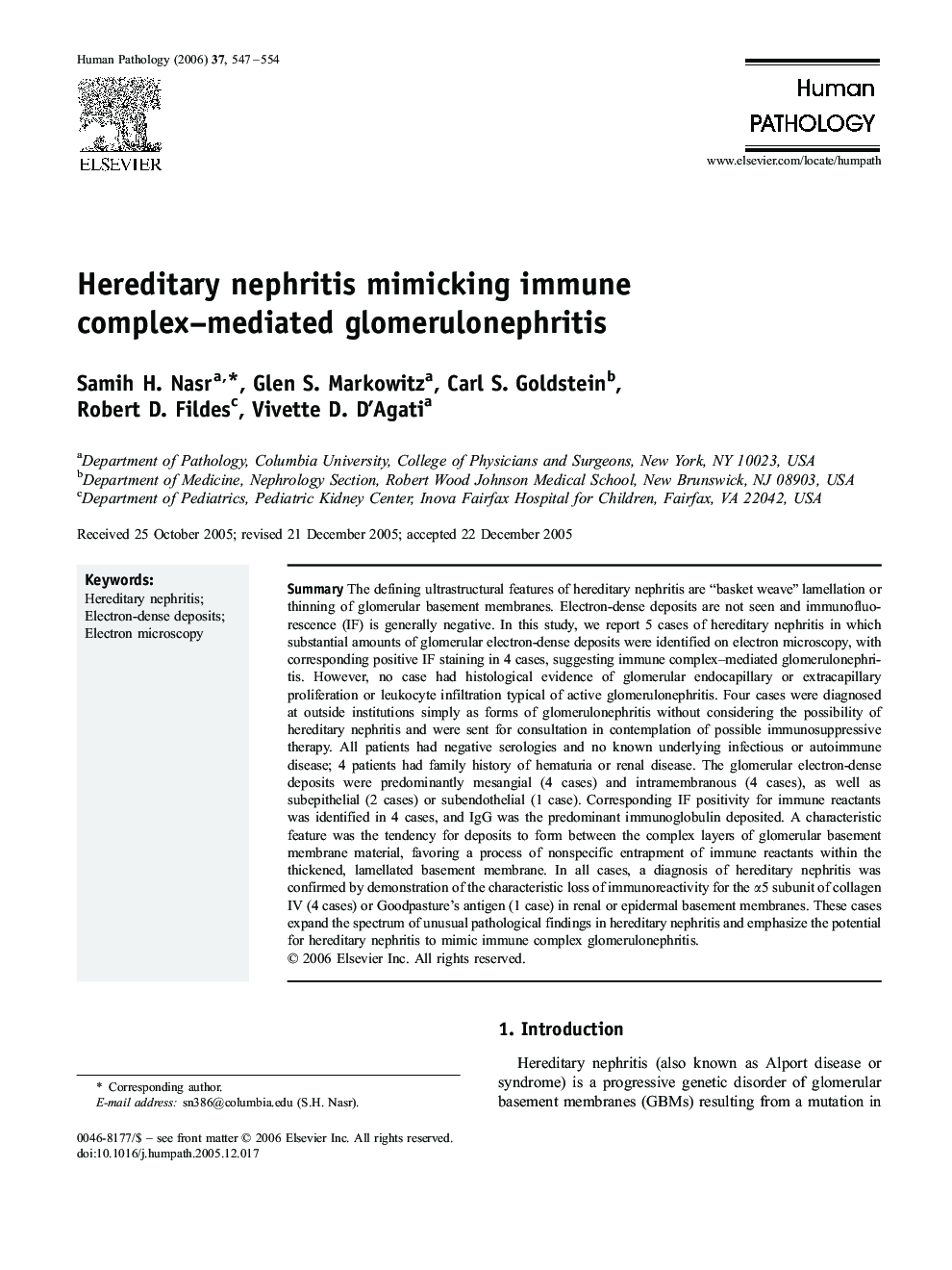| Article ID | Journal | Published Year | Pages | File Type |
|---|---|---|---|---|
| 4135247 | Human Pathology | 2006 | 8 Pages |
SummaryThe defining ultrastructural features of hereditary nephritis are “basket weave” lamellation or thinning of glomerular basement membranes. Electron-dense deposits are not seen and immunofluorescence (IF) is generally negative. In this study, we report 5 cases of hereditary nephritis in which substantial amounts of glomerular electron-dense deposits were identified on electron microscopy, with corresponding positive IF staining in 4 cases, suggesting immune complex–mediated glomerulonephritis. However, no case had histological evidence of glomerular endocapillary or extracapillary proliferation or leukocyte infiltration typical of active glomerulonephritis. Four cases were diagnosed at outside institutions simply as forms of glomerulonephritis without considering the possibility of hereditary nephritis and were sent for consultation in contemplation of possible immunosuppressive therapy. All patients had negative serologies and no known underlying infectious or autoimmune disease; 4 patients had family history of hematuria or renal disease. The glomerular electron-dense deposits were predominantly mesangial (4 cases) and intramembranous (4 cases), as well as subepithelial (2 cases) or subendothelial (1 case). Corresponding IF positivity for immune reactants was identified in 4 cases, and IgG was the predominant immunoglobulin deposited. A characteristic feature was the tendency for deposits to form between the complex layers of glomerular basement membrane material, favoring a process of nonspecific entrapment of immune reactants within the thickened, lamellated basement membrane. In all cases, a diagnosis of hereditary nephritis was confirmed by demonstration of the characteristic loss of immunoreactivity for the α5 subunit of collagen IV (4 cases) or Goodpasture's antigen (1 case) in renal or epidermal basement membranes. These cases expand the spectrum of unusual pathological findings in hereditary nephritis and emphasize the potential for hereditary nephritis to mimic immune complex glomerulonephritis.
